SurfboardsSpeaking on Asymmetrical Surfboard Design: The Donald Brink Interview
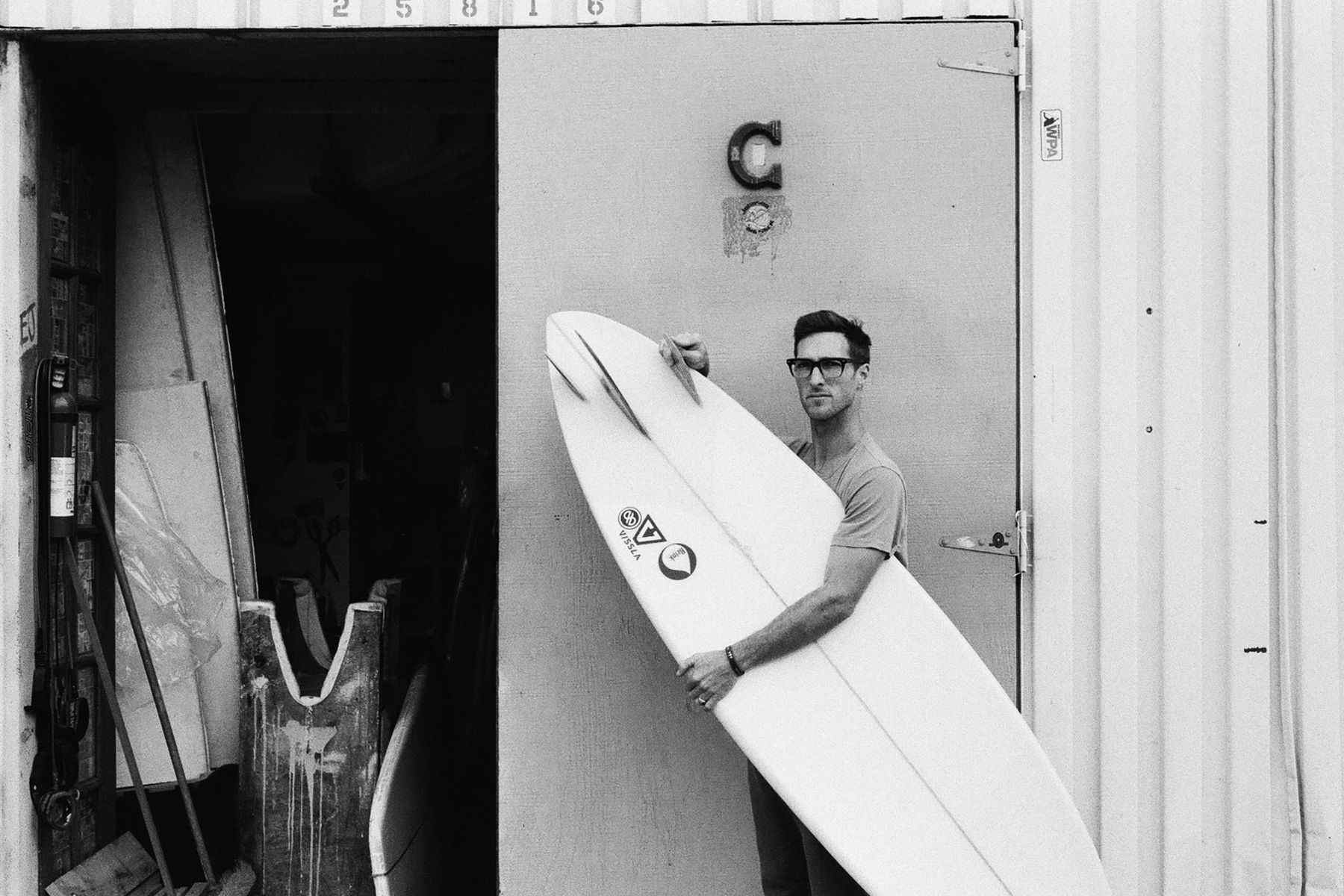
The 21st century: what an incredible time to be alive! With so many technological developments happening at such a fast pace, creative minds are propelled to constantly ask themselves “what’s next”, “how about”, and “perhaps if we tweak this”. In the world of surfing, this coalition between technology and creativity is strongly connected with one element more than any other: surfboard design.
Born and raised in South Africa, shaper Donald Brink always had a wide array of top quality waves at arms reach. But it wasn’t until turning 15, when his family relocated to the coast, that he finally became interested in surfboard design and dynamics. Like most shapers he began his apprenticeship by observing in the shaping room until gaining enough confidence to grab a planer and dive into his own ventures. Soon, he started to see each board as an extension of the rider’s feet, carefully considering both the interactivity and limitations of the foot, ankle pivot, and weight distribution when developing his boards. As he honed his craft, the winds blew Donald in a somewhat unconventional direction through the exploration of asymmetric designs.
“Asymmetry for me makes for accurate and enjoyable surfing with ease on the smallest of canvases. Every shape is infused with careful attention to detail in all functional elements. Water flows in a simple way; so should the hydrodynamic concepts in your board’s shape. My goal is to achieve harmony between design and function rather than having elements oppose one another.”
Surf Simply caught up with Donald to find more about the intricacies of this often-overlooked design concept as well as his personal journey and professional approach into the world of asymmetry.
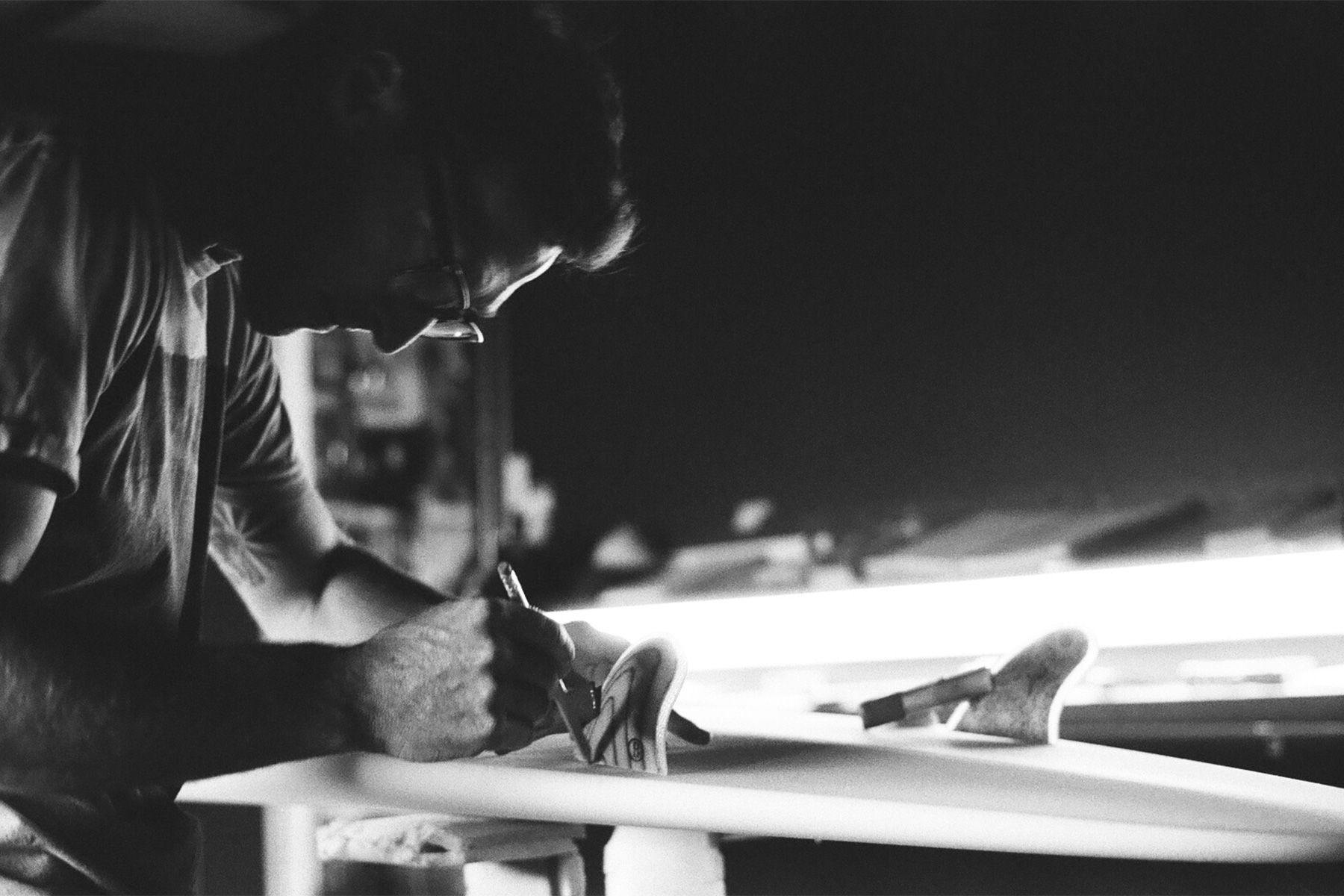
How did you start experimenting with asymmetrical designs and what were the biggest challenges you faced? Have they all been overcome?
I moved to California and dove straight into all the retro shapes that I had longed to explore. There was limited access to all these original and historical crafts in South Africa where I was already hooked on Twin Fins and 80’s thrusters, but the variety of waves there was so diverse that their design nuances in hindsight may have been less defined to me. The softer sloping Southern Californian canvases were a treat on these wide tailed fish styles and flat rockered vintage beauties, but my frustration from poor technique and beach break reactions necessary on the punchy waves demanded adjustments.
I still feel that technique will ultimately triumph any design, but adjusting things most carefully by helping the heel side approach on any craft began there and has been a focus ever since. For me it’s stance specific design; to maintain the flavor of the craft in question and make its performance more natural and available when you ride the way you stand.
The biggest challenge is to maintain the cohesion between all the elements in a board and not create a wild horse so to speak. I was pushing things too far in the beginning, learning where the functional boundaries have been has given me confidence in creating custom orders for people. This is the goal: boards that people love, that work and that last.
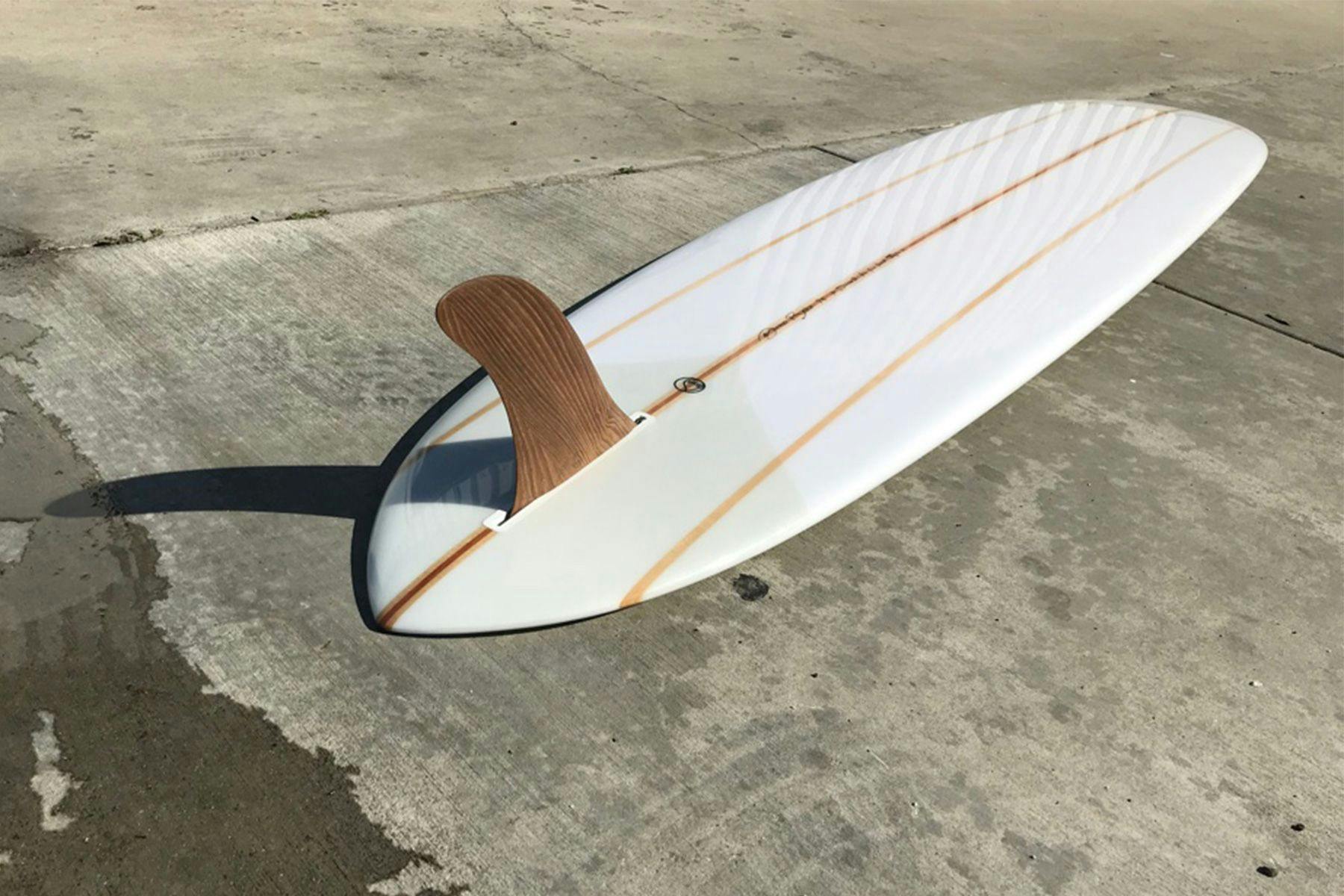
The word “asymmetric” can be pretty self-explanatory, yet I’m sure that there is more to it than just an intriguing anatomy. Can you talk a bit about the theory behind the approach and the concepts of the design?
I’ll say it this way. Good boards are a cohesive assembly of design concepts which together can be depended upon and directed and re-directed, according to a surfers ability throughout their vision on a wave. Symmetry is a pleasant design concept. The deviation from such things is still design and in pursuit of a better cohesion between elements according to your stance and driving force, I think it’s simple and ultimately quite pure. Perhaps it’s more difficult to recreate, balance and consistently express, but with excellence in mind and reverence for the craft and the potential acts of surfing I think it’s a beautiful can of worms.

If someone wants to transition into (or just try) riding asymmetrical shapes, what are some of the things they should bear in mind?
Every one has a unique approach to asymmetrical shapes and I can’t answer for all shapers intent nor surfers understanding. There are different approaches to design. I focus on stance specific craft, whilst others gravitate to wave direction specific boards. I’ll speak about that which I’m most focused: stance specific performance boards. Saying this simple phrase really dictates a lot. I’m assuming you are going to be standing one way in a mostly predetermined area on the board as you ride and will then make body adjustments to and from this position as you are able when needed. So I am expecting you to apply good sound surfing technique in your approach to the wave and its sections throughout your maneuvers. The changes made to the craft are to enhance the capabilities on either your toe side or your heel side as you do these. One shouldn’t expect a surfer to reinvent their surfing, and challenging practiced approach and muscle memory would be presumptuous. Simply surf the way you are able with the best technique you can practice and the changes shaped within the design can help you do so with more confidence and across a bigger variety of conditions. Surfing is a difficult thing to do to begin with, on a challenging canvas, but design and technique can be the keys to more smiles.
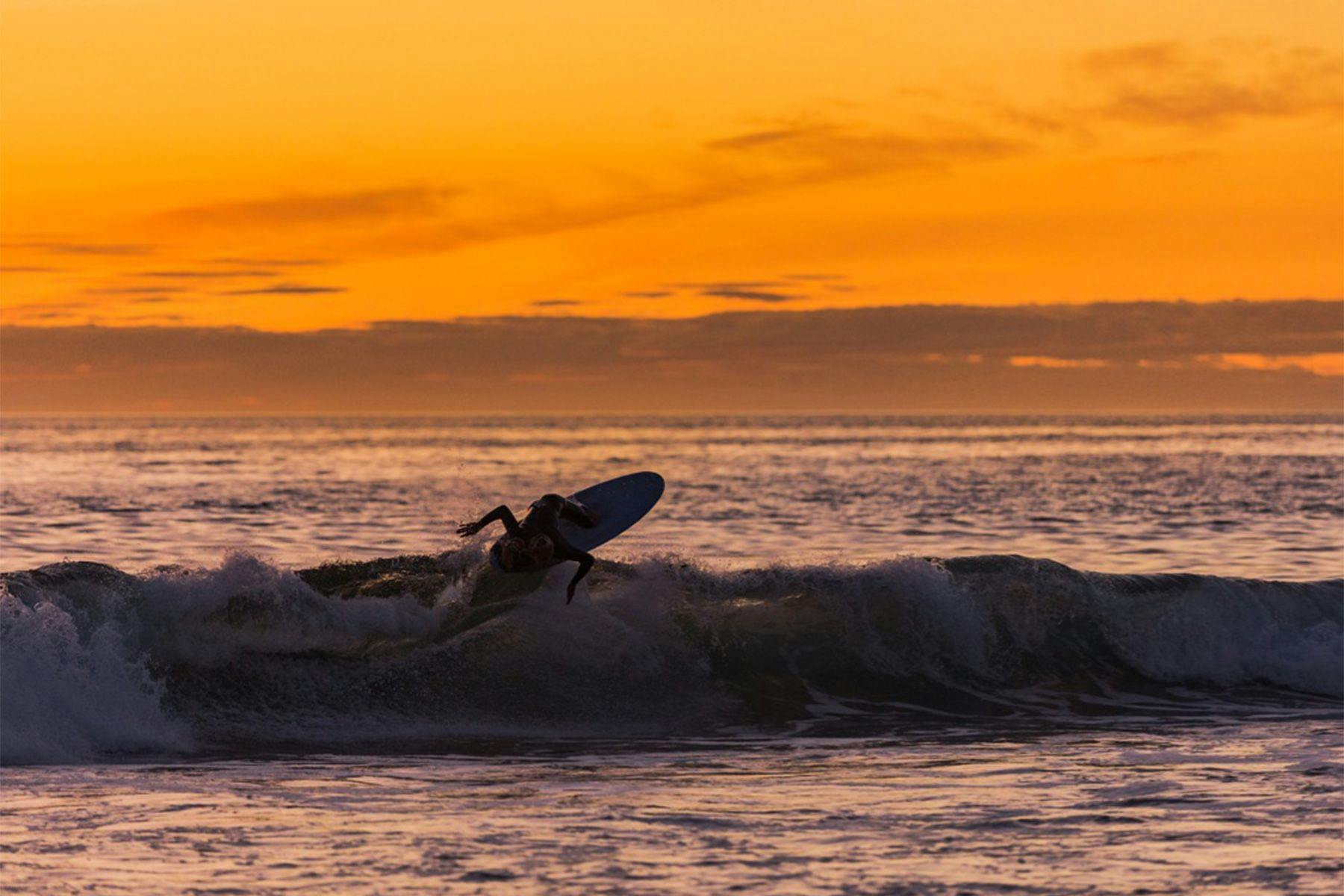
What are the main features that distinguish asymmetrical boards from symmetrical designs when it comes to shaping? Have you ever experimented with something that you otherwise wouldn’t have thought of in a symmetrical surfboard?
For me asymmetry is a concept applied to a design of a board, not a type of board. They get thrown in their own category which is funny. There are definite territories I’ve explored that would have been unobtainable unless by asymmetry, particularly with regards to volume. It’s easy to make a thick board that sucks, but when you can arrange the distribution of the foam in ways where its cohesive with the weight loaded and leveraged by a rider from a heavier set heel turn verses the more responsive and nuance toe control, well that’s adding volume without it being a hinderance. Most commonly it’s best to change several things to a small degree and within relationship to each other, rather than one or two things to a large degree. It’s a twist in the rocker, off-set fins, varying wide points and overall plan shape to be brief.
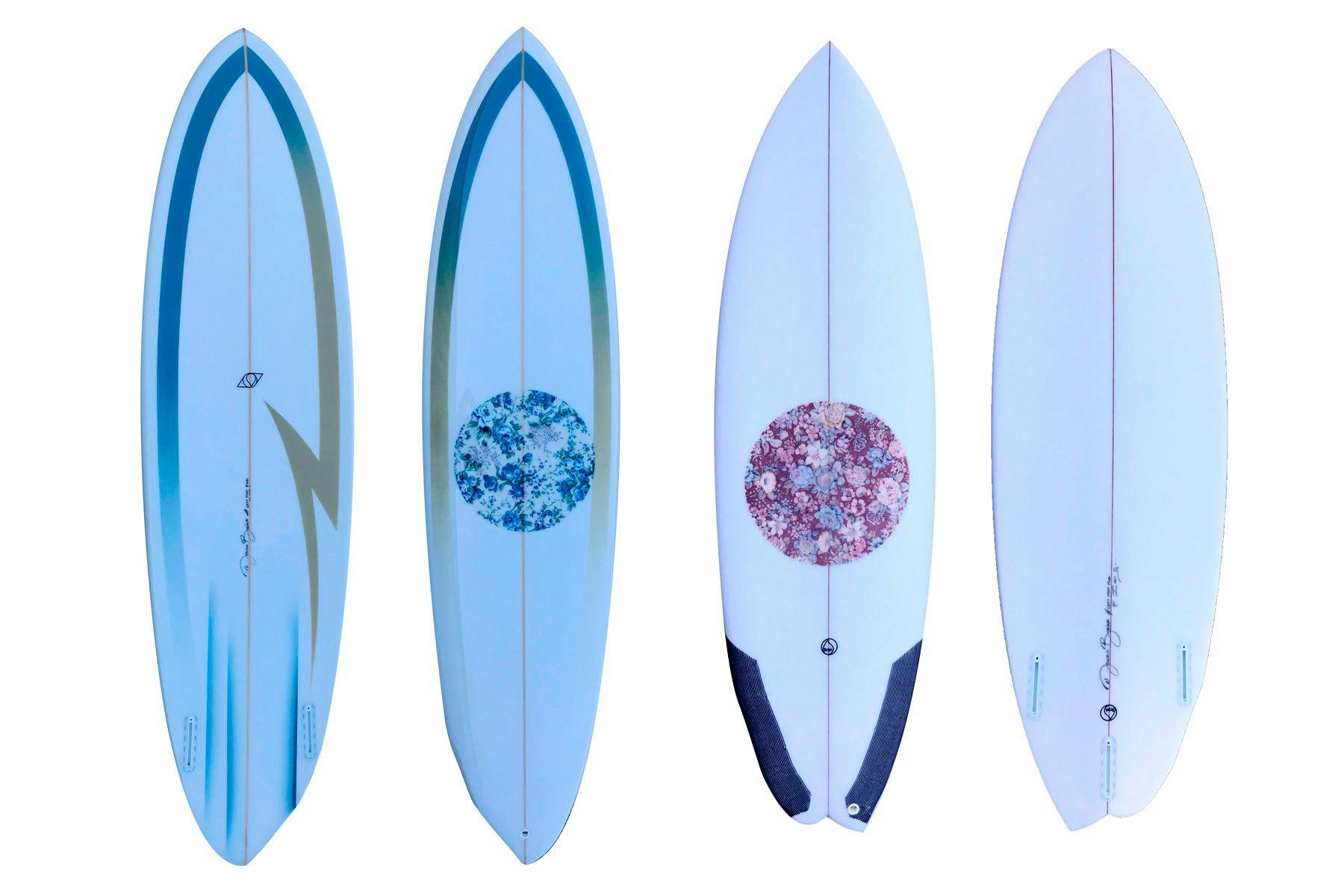
What core materials do you work with? Do you find that some work best than others or does it depend on the design?
I hand shape all my boards and embrace the material most appropriate to the other elements of the design in question. I’m enjoying the potentials of EPS and epoxy and build many stringer-less boards with PU and dense EPS core respectively to get the desired results. The sustainability of the craft is an area I’m constantly deigning around and trying to best understand and embrace. Building boards that work and last is the goal. When it comes to retro sleds and logs, weight and density is such a big part of how those boards feel, and why we like and depend on them.
I read on your website that you pay great importance to the fins. In this context, how do different types of fin relate to different asymmetrical models? Do you consider the fins as a part of the overall design or is it something you think about once the board is finished?
The entire craft is visible in my mind before starting. It’s easy to sketch things out for a customer and make sure we are on the same page and I often do this. It’s convenient to be able isolate an element like a fin and know what one thing is doing in relationship to another variable or variables. Saying this, I design with a reference to one thing in mind and if there is a fin change according to conditions or flex there after it can be best referenced from where we began, the basis for all the other parts. I foil all the ply wooden fins and make sure they are done before shaping the board to have in hand as a piece in the puzzle for drawing outlines, mapping release points and setting angles with reference to the bottom contours.
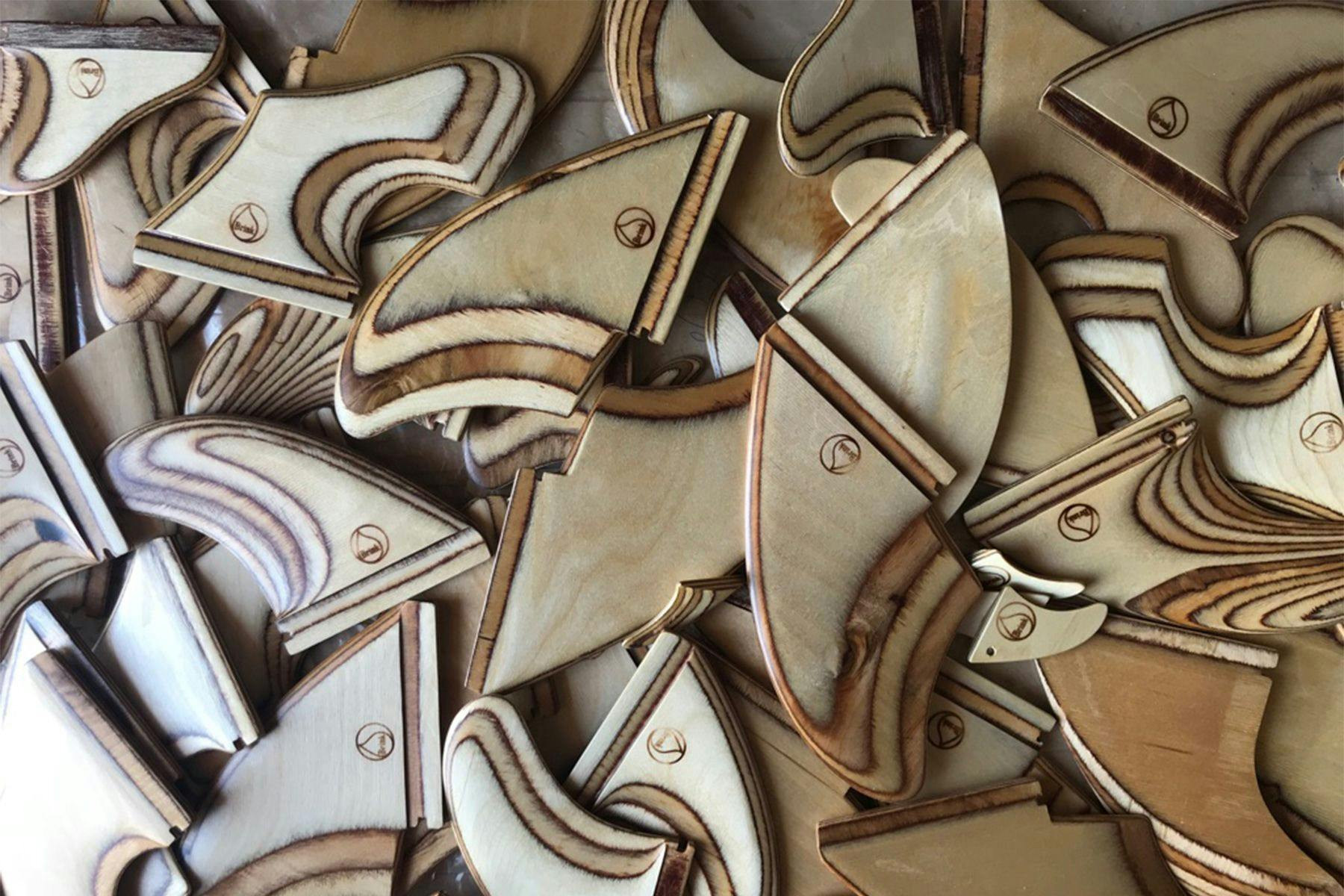
With shapers like Ryan Burch and Ryan Lovelace (among others) also advocating for asymmetrical designs, there seems to be an increasing number of surfers willing to give this a try. How do you see this approach to board making developing in the near future?
It is really exciting. As they say, “a rising tide floats all boats.” I’m happy to share anything and everything that I’ve learned. For me it’s an open door policy with any information or advice I may have that could make sense or be helpful. We are all in this together, we have learned from those who designed before us, directly or even unbeknownst. I had a firm handshake from Carl Ekstrom at the recent “Boardroom Show” and he encouraged me to keep going with a smile wider than the brim of the hat on his knowledge filled head; saying how stoked he was to see what I’ve been doing over the years. You see, there are so many thoughts in all our minds worth developing and expanding. It’s important to stick to what inspires you and pursue excellence, peace and understanding. I don’t think asymmetry can be denied any longer as a design concept. However, these surfboards can be more difficult to get just right. Like any board though, the good ones bring the best smiles for those who want to play and that’s worth sharing no matter what anyone else is doing.
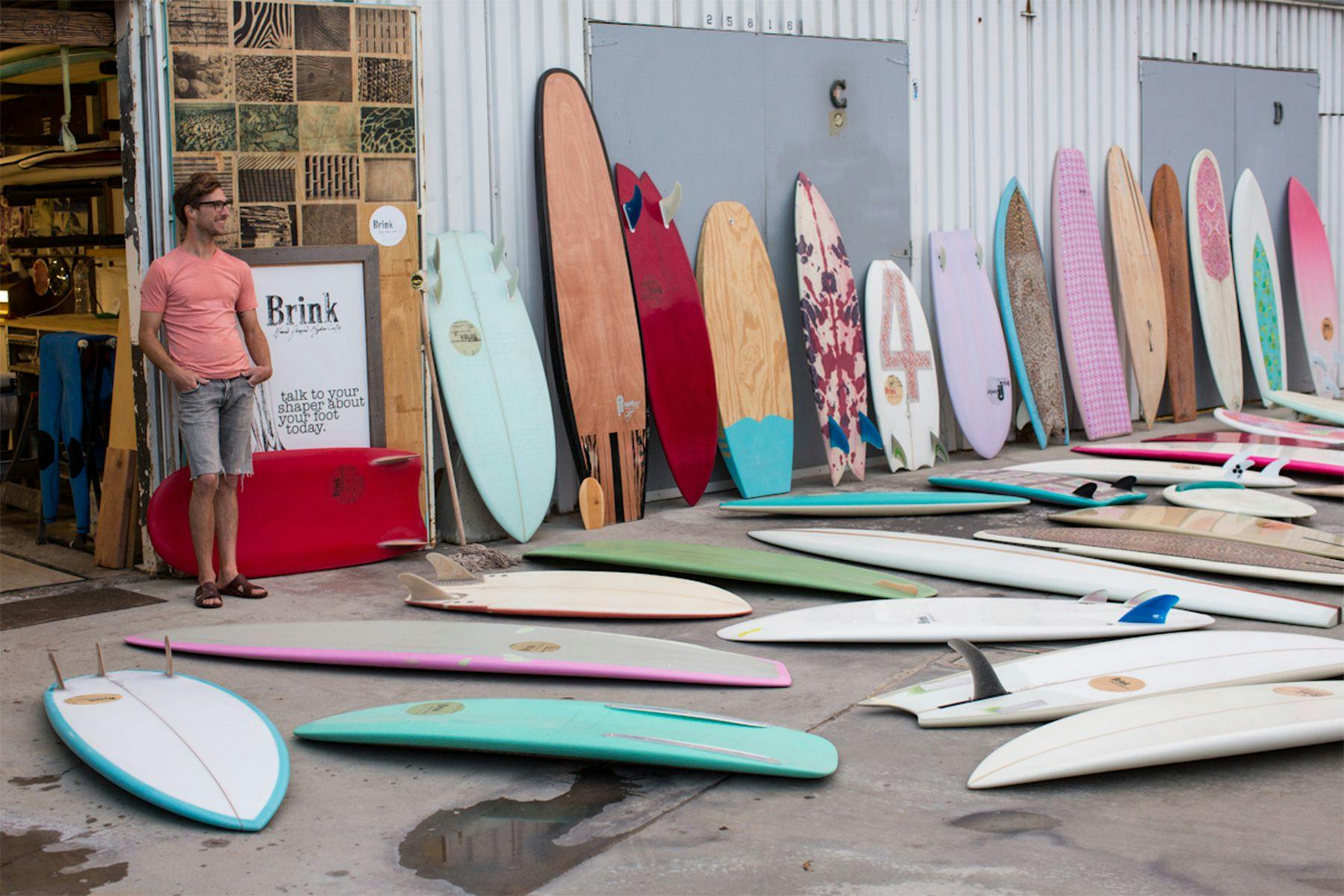
By looking at your portfolio, you seem to have developed asymmetrical versions of most classic designs, from the Fish to Thrusters and even Guns. So, what is next?
What’s next is a fun question. Design-wise, I’m working on a collaboration with Channel Islands that we hope to bring to the market once we are happy with all the details and design elements. There is a long way to go, but I’m inspired by their open mind to design and the deep knowledge of boards with a commitment to excellence in the craft. It’s fun to be a part of something much bigger. I’m about to leave to shape in Portugal at Magic Quiver in Ericeira, focusing on a collection of retro inspired flat deck thrusters and twins with asymmetrical updates. We will be hosting some events and Q&A evening in partnership with Vissla so that’s going to be good. I’ve had myself spread pretty thin over the last 7-10 years designing and shaping everything. It’s good and I enjoy building all crafts, but as surfing developed and grew throughout the decades, there seems to have been parts that were understudied and overlooked. It’s best to stay focused on what fascinates one most and with surfboards it’s easy to make what you ride and believe in, so that’s a simple solution. Some parts of the history died because they should have and if things don’t work what’s the point? Saying all this, I have always had a fascination for small single fins. The potential efficiency with refreshing lines and performance approaches has me restless. It’s going to be a long design trail that may end up being futile and regarded as irrelevant by some of the best, but the hydrodynamic concepts are simple and salty.
See more of Donald Brink’s asymmetrical surfboards at www.brinksurf.com